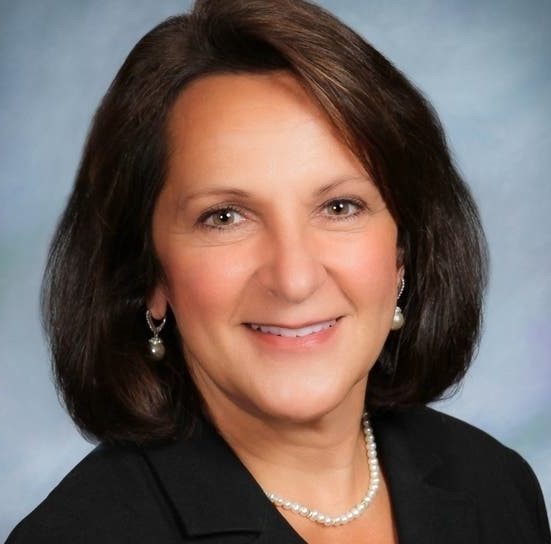Several years ago, our superintendent introduced the practice of monthly instructional rounds, during which teams visit a school and provide feedback on a problem of practice following classroom observation and notetaking. As I facilitated rounds at Bunnell High School four years ago, I realized that the greater part of the feedback and experience of rounds really only impacted the administration, as teachers received feedback secondhand. In short, all the time, effort, and discourse that characterized instructional rounds traveled a long road to directly impact student achievement. To address this concern, I shifted the lens of rounds from administrators to students, seeking to impact their potential and trajectory as learners while providing teachers feedback from familiar faces—their students.
Shifting the Lens
After deciding to conduct instructional rounds with and for the students, we focused on our freshmen, seeking to impact their remaining years at Bunnell. At the same time, I was committed to addressing a significant academic concern: the disconnect between our school enrollment and the demographics of students enrolled in honors and Advanced Placement (AP) classes. In 2016, with an enrollment of more than 1,000, only 125 AP tests were administered to students at Bunnell.
The following year, I visited every AP course offered with teams of six to eight freshmen identified by their teachers as having the potential to take AP courses—a total of 60 students. Parents gave permission for students to participate, and their teachers were notified of their excused absences. The students and I began our days together with a brief conversation to establish the purpose and procedures for rounds. In keeping with the protocols of instructional rounds, we gave student observers clipboards and observation sheets to guide and support their classroom visits and notetaking related to five focus areas:
- “What do you see the teachers doing?”
- “What do you hear the teachers saying?
- “What do you see the students doing?”
- “What do you hear the students saying?”
- “What don’t you see or hear in the class?”
After lunch together and afternoon visitations, the students and I would reconvene in my office so they could share their thoughts, observations, and takeaways using the five focus areas of the observation sheets to guide the conversation.
Encouraging Student Growth
Participating students were consistently impressed with the preparation among the upperclassmen in the AP classes and the shift from “teacher talk” in their own classes to student-led discourse and collaboration. They found the pace and content of the AP classes engaging and exciting. They also recognized the skills and self-discipline needed for their future success in those classes and left with the confidence to pursue AP study.
“Before rounds, I felt that AP classes were so stressful and hard and that they would be too challenging for me, but now I feel that, as long as I put effort into my work and try, I will be fine taking AP classes,” one student reflected at the time. When that first group of students was eligible to enroll in AP classes two years later, they took 329 AP tests the following spring, a significant increase from previous years.
During the 2019-20 school year, rounds took on greater significance as we planned to offer two AP classes to sophomores that year (U.S. History and Psychology), as well as transition to a rotating block schedule (offering an eight-course load). We also expanded the focus of AP rounds to include additional enrollment opportunities. Each team of freshmen and I visited 25 classes—every AP class; a course from each pathway program; and various electives, including journalism and yearbook. In May 2020, we administered 508 AP tests—an increase of 65 percent, and AP enrollment for students of color increased 50 percent.
These efforts received statewide recognition. The University of Connecticut recognized Bunnell among the “Top Ten High Schools in Connecticut” in the UCONN Early College Experience (ECE) Program for the 2019-20 academic year, as seven of our 15 AP courses were also offered for UCONN ECE credit. The following year, we climbed to eighth overall on the UCONN list of top high schools for ECE enrollment. Today, Bunnell offers 16 AP courses, 9 of which are eligible for UCONN ECE credit.
Feedback to Teachers
Each spring, our rounds initiative would come full circle, when we tasked the video production students to create a three- to five-minute montage of student “sound bites” from participants willing to be filmed. The video was then shared at a faculty meeting for all staff to view, discuss, and reflect upon in terms of their own practice. It was powerful for staff to be reminded, in the words of their students, that they wanted to be more challenged, to work harder, and to be supported in setting and attaining academic goals.
For me, the greatest takeaway from this experience was how instructional rounds empowered students. “Before rounds, I didn’t know much about AP classes,” one student shared. “Now I feel prepared. I feel like I know my options, and I can now start thinking about the rest of my high school experience.” While Bunnell still has “miles to go” in terms of AP enrollment and diverse participation, I am very proud of what has been accomplished and the positive impact of instructional rounds on our students and school.

